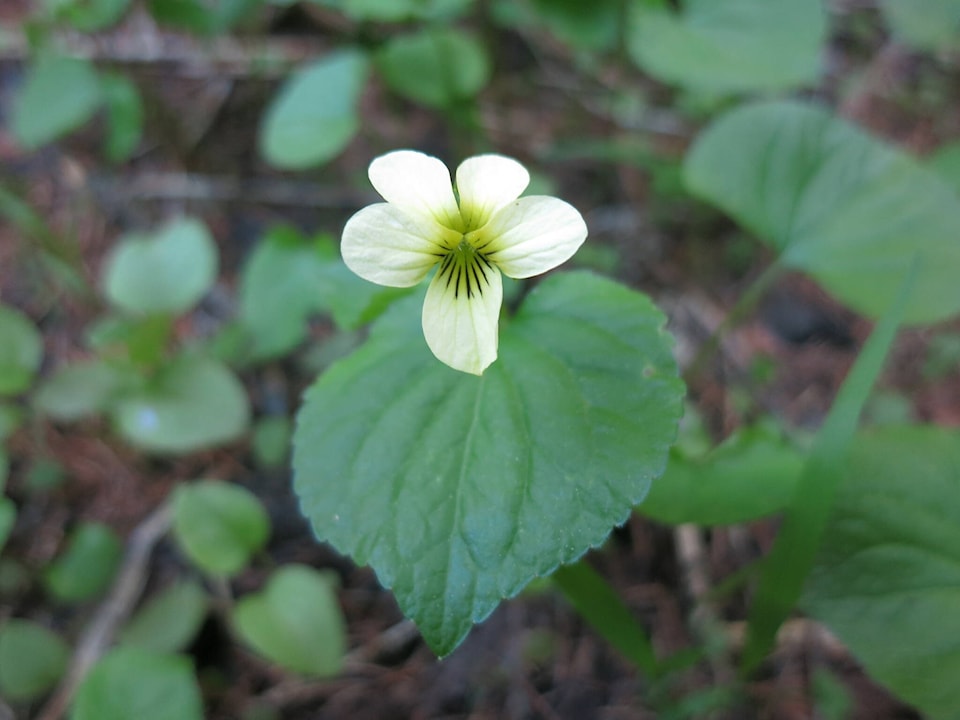By Ed McMackin, a biologist by training and a naturalist by nature
Flowers are a favourite all around the world, even in Antarctica, where there are only five or so species. Birds are too, but they fly away when they decide they have been looked at enough. Flowers don’t move around too much except in a gusty wind. The ones on long stems bend low and the ones on short stems jiggle.
It seems that flowers haven’t been a big enough favourite to get put on Canadian currency, like bills and coins. However, birds, other animals, and even fish have been put on money. The old two-dollar bill depicted a robin, and the five, a kingfisher, and one of the dimes had a bird on it. Oh yes, lest we forget, the loonie depicts the loon, a symbol of Canada’s wilderness. A symbolic animal of Canada, the beaver, appears on most Canadian five cent pieces, and the caribou, an animal of waning numbers, appears on the quarter, 25 cent piece.
READ MORE: Out There: Christmas Connections
If we could call getting put on a coin a step closer to the “hall of fame”, flowers have been just a step behind. Flowers, from gardens to the wilds, hold their place on Canadian stamps. In 1964, Canada produced 12 stamps depicting the floral emblems of each province, the Yukon, and Northwest Territories. Canada’s national floral emblem is the Maple Leaf. Quebec’s was the Garden Lily, but botanists contested that, so it was changed to Blue Flag.
Canada has been incorporated into the common and Latin names of at least a half-dozen or so flowers, such as Canada Dogwood/Bunchberry (Cornus canadensis), Canada Lily (Lilium canadensis), and others. “Canada” may have been applied in naming if it was first observed or most common in Canada. But the only bounds that plants recognize are ecological boundaries.
Canada Violet (Viola canadensis) is found, along with five other species of violet, in the Kootenay Lake-Creston Region, Montane Forests, as well as in other parts of Canada. It has been featured on the cover of Canadian Wildflowers Through the Seasons, by Ferguson and Saunders, 1982. Canada Dogwood (Cornus canadensis) is found in Temperate Zone forests across Canada. Interestingly, it has also been called Crackerberry and Pigeonberry in parts of the New England States, Maritime Provinces, and Newfoundland.
The most human-inhabitated part of Canada lies within the North Temperate Zone which includes much of southern Canada and the northern United States. A large portion of that is the Western Plains. So, many plants found in Canada are also found in the northern United States.
There are a few flowers whose names incorporate a region. Take for example Monkshood (Aconitus columbianum). It occurs frequently in the Columbia-Kootenay Region of southern British Columbia. It thrives in partial shade, damp, shady forest openings, often on north aspects. Similarily, our Columbia Tiger Lily (Lily columbianum) is most commonly found in the wet Columbia-Kootenay mountains. Let’s move on to the provincial and territorial flowers.
As far as I know, the provinces and territories of Canada selected flowers that were native, while at the same time were most representative. They are: British Columbia – Pacific Dogwood; Alberta - Wildrose; Saskatchewan – Wood Lily; Manitoba – Prairie Crocus; Ontario – White Trillium; Quebec – Blue Flag Iris (Iris versicolor); New Brunswick – Purple Violet; Nova Scotia – May Flower/Trailing Arbutus; Prince Edward Island – Pink Lady’s Slipper; Newfoundland – Pitcher Plant; Yukon – Fireweed; Nunavut – Purple Saxifrage; and Northwest Territories – White Mountain Avens, floral emblem of Iceland.
Pacific Dogwood, British Columbia’s floral emblem, occurs as a small tree. It is the largest member of the Dogwood Family while Canada Dogwood/ Bunchberry, is the smallest of the dogwoods. Red-osier Dogwood is common in the Kootenay Lake-Creston Region.
Flowers are an important part of Canada’s landscape, and hopefully you learned a bit more about them today.
